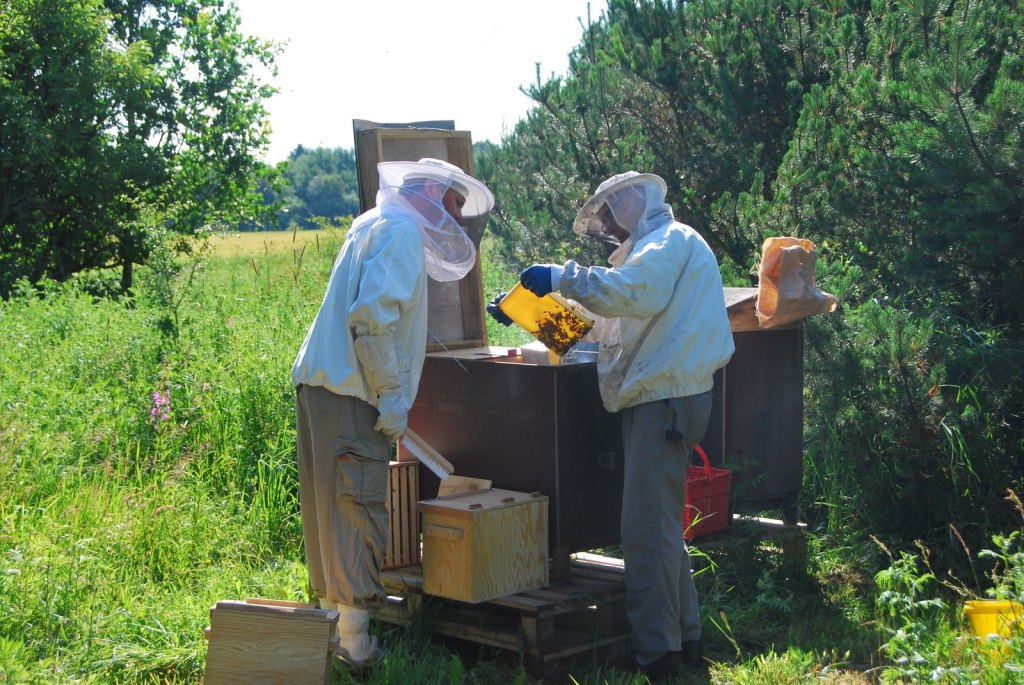Harvesting and Selling Honey: A Guide to Rural Living and Homesteading
Introduction:
For those living in rural areas or homesteading, the art of beekeeping offers a plethora of benefits. Not only do bees play a vital role in pollinating crops, but they also produce one of nature’s most delicious and versatile products: honey. Harvesting and selling honey not only provides an opportunity for self-sufficiency but can also generate income for individuals looking to embrace the beauty of rural living. In this guide, we will explore the step-by-step process of harvesting honey from your own beehives and how to navigate the world of selling this golden nectar.
Chapter 1: The Basics of Beekeeping
Before diving into the process of harvesting honey, it is crucial to have a solid understanding of beekeeping fundamentals. This chapter will cover key aspects such as selecting suitable hive locations, acquiring bees through packages or swarms, obtaining necessary equipment like hives, protective gear, and tools.
1.1 Hive Placement:
Selecting an ideal location for your beehive is essential. Bees thrive in areas with abundant floral resources; hence it is advisable to place hives near flowering plants such as fruit trees or wildflowers. Additionally, ensure that there is access to water nearby as bees need it for hydration.
1.2 Acquiring Bees:
Bees can be obtained through purchasing packaged bees or by capturing swarms during swarm season (usually spring). Packages contain a queen bee along with worker bees while swarms are groups of bees led by their queen searching for a new home.
1.3 Necessary Equipment:
To start your journey as a beekeeper, you will need basic equipment including hives (either Langstroth or top-bar), protective clothing such as veils and suits made from light-colored fabric that covers you entirely from head-to-toe while still allowing airflow, smoker (used to calm bees during hive inspections), hive tools (for prying open hives and removing frames), and a bee brush (to gently move bees away when necessary).
Chapter 2: Preparing for Honey Harvest
Once you have established your beehive, it’s time to prepare for the honey harvest. This chapter will cover essential steps such as understanding honey flow, assessing colony strength, and proper timing for harvesting.
2.1 Understanding Honey Flow:
Honey flow refers to the period when nectar is abundant in the area surrounding your beehive. It typically coincides with peak flowering periods of various plants. Monitoring local flora and observing bees bringing in large amounts of pollen are indications that honey flow has begun.
2.2 Assessing Colony Strength:
Before harvesting honey, it is crucial to ensure your colony is strong enough to sustain itself after extraction. A healthy colony should have a sufficient population of worker bees, capped brood cells (indicating new generation development), and ample food stores.
2.3 Timing for Harvesting:
Timing plays a vital role in ensuring high-quality honey production. Wait until most of the honeycomb cells are capped with wax before extracting honey; this indicates that moisture content is adequately low which contributes to better preservation and prevents fermentation.
Chapter 3: The Honey Harvest Process
Now that you’ve prepared your beehives for harvesting, let’s dive into the step-by-step process of collecting delicious golden honey from your colonies.
3.1 Removing Supers:
Supers are additional boxes placed above the main brood chamber where bees store surplus honey. To begin the extraction process, carefully remove each super using a bee brush or blower to clear off any remaining bees on top.
3.2 Uncapping Frames:
The next step involves uncapping frames using an uncapping knife or hot air gun specifically designed for this purpose. Run either tool across both sides of each frame until all cells are exposed, allowing honey to be released during extraction.
3.3 Extracting Honey:
Place the uncapped frames into an extractor, which can be either manual or electric. The extractor spins the frames rapidly, using centrifugal force to extract honey from the comb and collect it at the bottom of the device. Once extracted, strain honey through a fine mesh sieve to remove any remaining impurities.
Chapter 4: Selling Your Harvested Honey
Congratulations on successfully harvesting your honey! Now comes the exciting part: selling your product and sharing its deliciousness with others. This chapter will guide you through marketing strategies and legal requirements for selling honey.
4.1 Packaging and Labeling:
Packaging plays a significant role in attracting customers. Use clean glass jars specifically designed for storing honey, ensuring they are properly sealed. Label each jar with essential information such as your brand name/logo, net weight/volume, ingredients (if any), and contact details.
4.2 Marketing Strategies:
Utilize various marketing channels to promote your honey products effectively. Establish an online presence by creating a website or social media accounts where you can showcase your journey as a beekeeper and highlight the uniqueness of your local honey. Participate in farmers’ markets or local fairs to engage directly with potential customers and offer samples for them to taste.
4.3 Legal Requirements:
Before selling your harvested honey commercially, research local regulations pertaining to food safety standards, labeling requirements, permits/licenses needed for small-scale producers/businesses operating from home kitchens or rural areas.
Conclusion:
Harvesting and selling honey is not only a fulfilling endeavor but also offers opportunities for self-sufficiency and generating income while embracing rural living and homesteading lifestyles. By understanding beekeeping basics, preparing hives diligently before harvest season begins, following proper extraction techniques along with legal requirements for commercial sales – anyone passionate about bees can enjoy the sweetness that comes from their hard work while contributing positively to the environment and local economy. Happy beekeeping!


Leave a comment